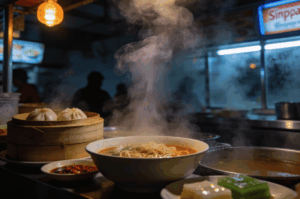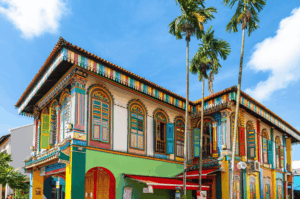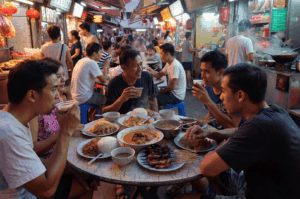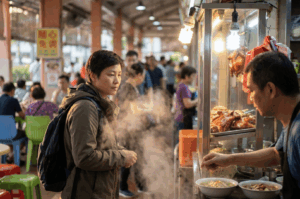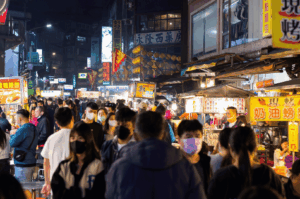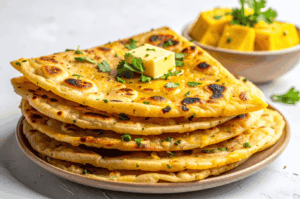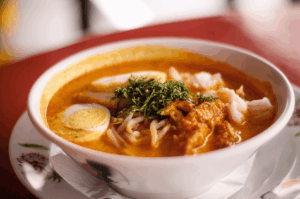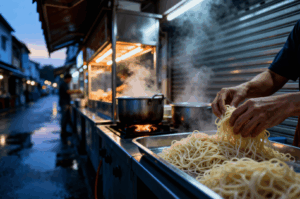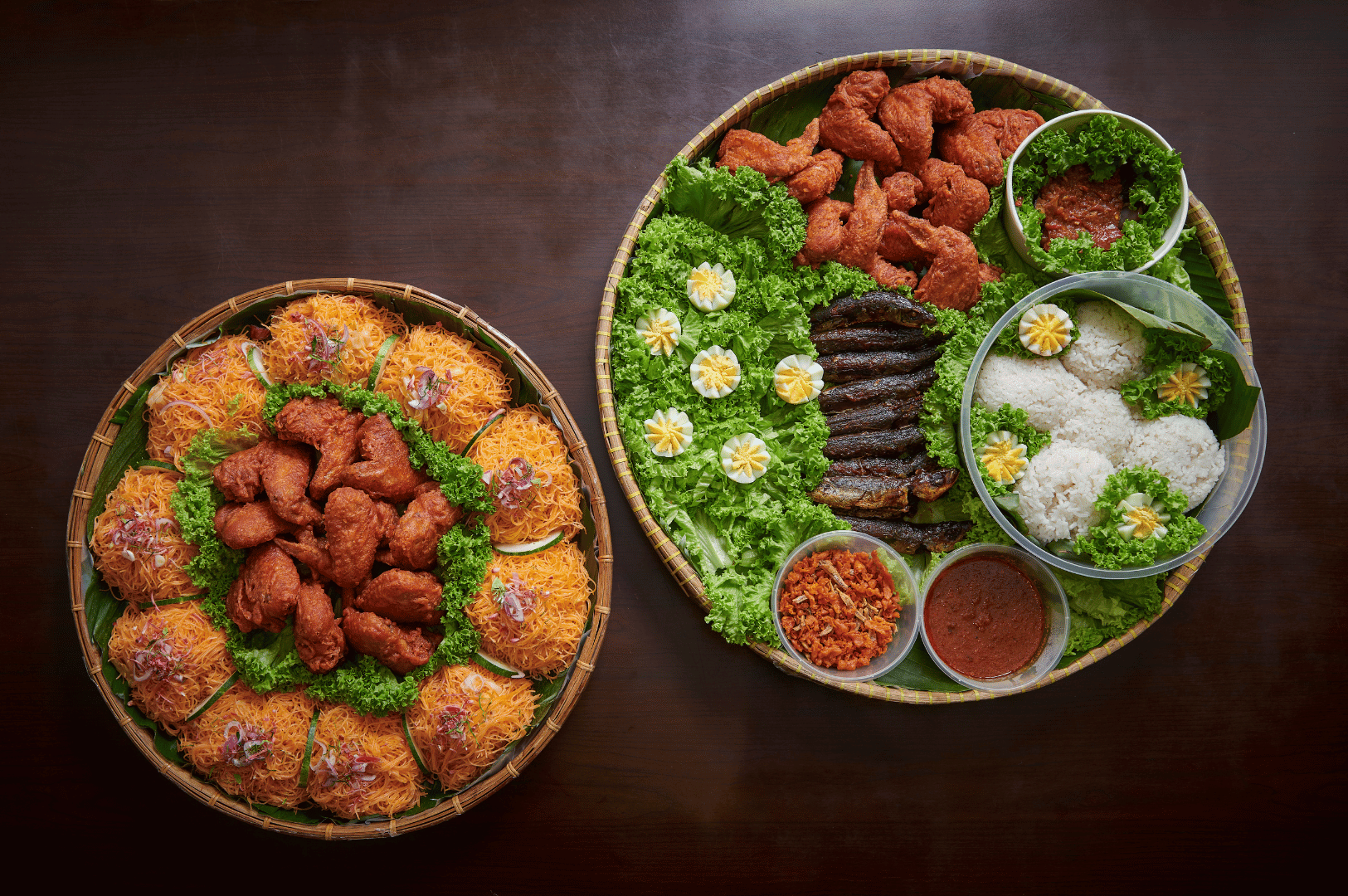
Step into Singapore’s hawker centers or heritage shophouses in Katong and Joo Chiat, and you’ll discover Peranakan cuisine—a vibrant fusion of Chinese ingredients and Malay cuisine. This culinary tradition, also known as Nyonya food, combines aromatic spices, coconut milk, and regional techniques to create authentic Peranakan food that tells the story of Singapore’s Peranakan heritage.
From crowd favourites like laksa and ayam buah keluak to modern reinterpretations by innovative chefs, Singapore’s Peranakan restaurants offer a journey through centuries of culinary fusion. A modern Peranakan restaurant often combines traditional recipes with contemporary twists, presenting classic flavors in inventive ways. In this guide, we explore the history of Peranakan food, signature Nyonya dishes, modern Peranakan restaurants—some of which have achieved Michelin star recognition for their exceptional cuisine—and even a home-friendly chicken curry recipe.
A Forbidden Beginning: How Peranakan Cuisine Emerged
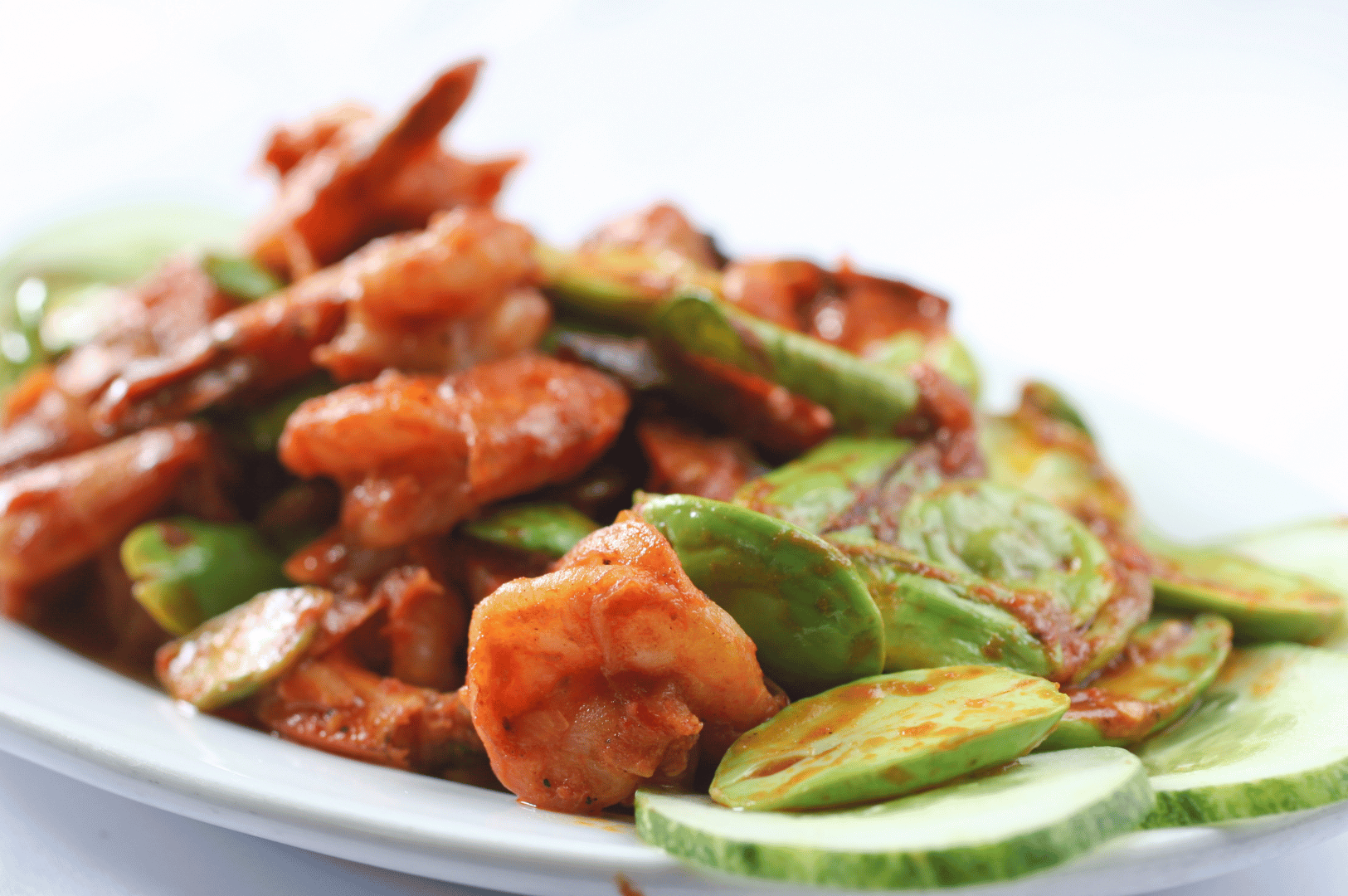
The origins of Peranakan cuisine date back to the 15th and 16th centuries, when Chinese immigrants settled in the Malay archipelago, particularly Johor Bahru, Melaka, and Singapore. Marriages between Chinese men and local Malay women gave birth to the Peranakan community.
Initially, Chinese and Malay cuisine remained separate—pork and chicken followed Chinese rituals, while Malay dishes adhered to Islamic dietary laws. But over time, Chinese ingredients such as noodles and soy combined with Malay spices, coconut milk, and herbs like pandan leaves and kaffir lime leaves. This fusion gave rise to Nyonya cuisine, a hallmark of Singaporean Peranakan food with regional variations across Malaysia, Indonesia, and Singapore.
Iconic Peranakan and Nyonya Dishes
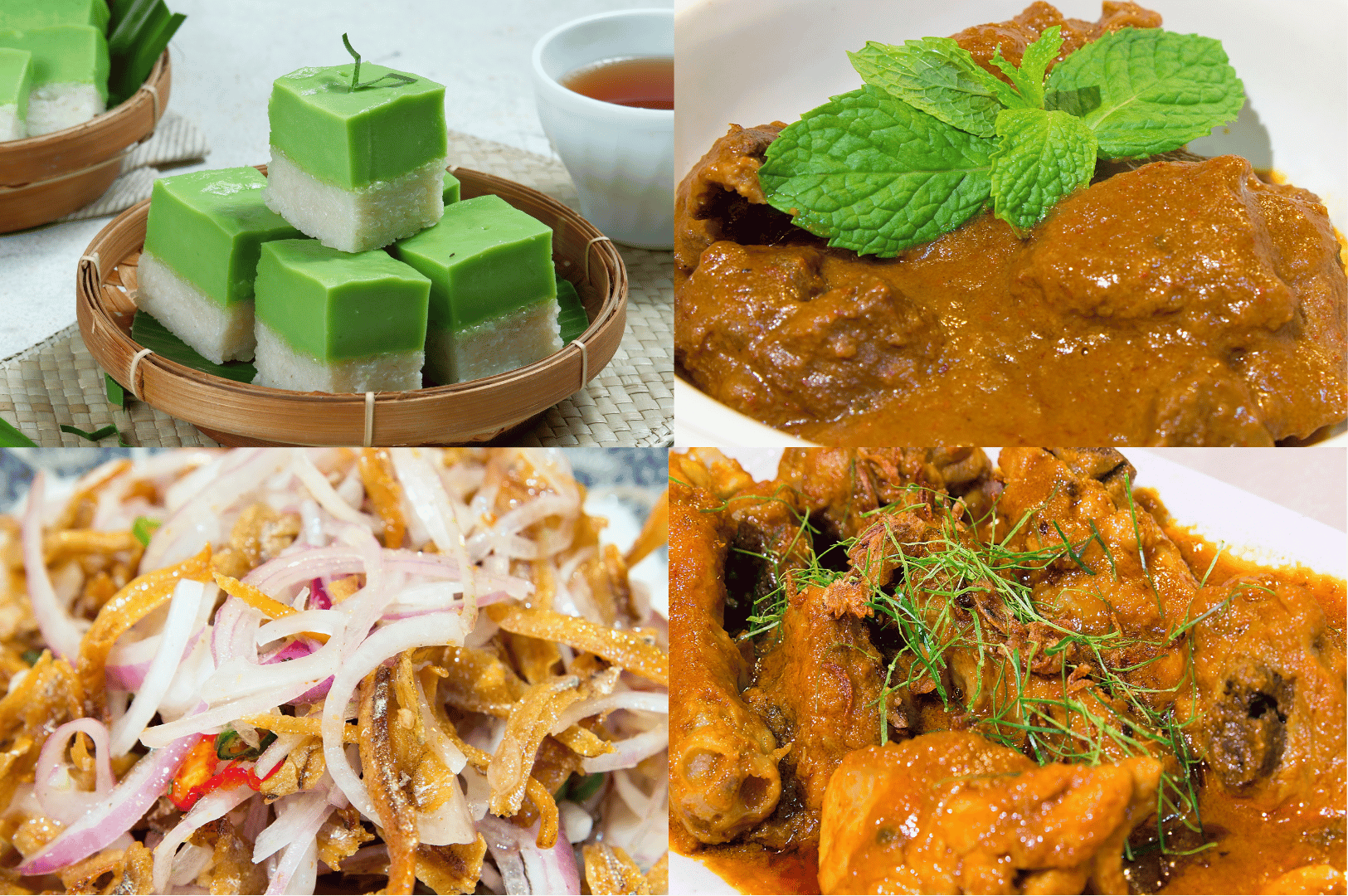
Singapore’s Peranakan cuisine is defined by bold flavors, aromatic spices, and a harmonious blend of Chinese ingredients with Malay cuisine. Here are the must-try Nyonya dishes that showcase the richness of authentic Peranakan food:
1. Laksa: A Coconut Milk-Infused Noodle Soup
Laksa is a spicy, creamy noodle soup that perfectly embodies the marriage of Chinese noodles and Malay curry spices. Its coconut milk base creates a rich, velvety texture, balanced with the heat of chili and the fragrance of lemongrass and turmeric. Topped with succulent prawns, tender fish cake, and aromatic laksa leaf, this dish is a crowd favourite at both hawker stalls and modern Peranakan restaurants.
Where to Eat: 328 Katong Laksa, Sungei Road Laksa.
2. Popiah: Fresh, Handmade Rolls
Popiah is a soft wheat crepe (Chinese) wrapped around slow-braised mixed vegetables, shrimp, and sometimes egg, sweetened with a light sweet sauce. Topped with deep-fried shallots and crushed peanuts, each bite is a contrast of textures—soft crepe, tender vegetables, and crunchy toppings. Traditionally prepared as a communal elaborate meal, popiah embodies the interactive, homegrown spirit of Peranakan food.
Where to Eat: Ann Chin Popiah, Old Airport Road Hawker Centre.
3. Bak Kut Teh: Herbal Pork Soup
A classic example of Chinese-Malay fusion, Bak Kut Teh features pork bones simmered for hours with aromatic spices like star anise, cinnamon, and cloves. Some regional variations incorporate coconut milk for added creaminess. Served with steamed rice and fried dough sticks, this hearty dish is perfect for those seeking comfort food with a Peranakan heritage twist.
Where to Eat: Song Fa Bak Kut Teh, Founder Bak Kut Teh.
4. Nyonya Kueh: Sweet, Colorful Treats
Nyonya kueh are bite-sized, colorful desserts that highlight the artistry of Peranakan cuisine. Made with gula melaka, coconut cream, and pandan leaves, these sweets combine rich flavors with stunning visual appeal. Popular varieties include Ondeh-Ondeh (molten palm sugar balls), Kueh Lapis (rainbow-layered steamed pudding), and Kueh Dadar (pandan crepe rolls). These treats are often enjoyed during festive occasions, birthdays (birthday noodles), and family gatherings.
Where to Eat: Bengawan Solo, Katong vendors.
5. Ayam Buah Keluak: Earthy Chicken Curry
Ayam Buah Keluak is a signature chicken curry of Nyonya cuisine, infused with the earthy, nutty flavor of the buah keluak nut. Slow-cooked in coconut milk, tamarind, and spices, this dish delivers a complex, layered taste. Traditionally served with rice, it’s a must-try for anyone wanting to experience the depth and richness of authentic Peranakan food.
Where to Eat: Blue Ginger, Candlenut, Simply Peranakan Cuisine.
6. Other Must-Try Nyonya Dishes
- Mee Siam: Thin rice noodles in a tangy, spicy tamarind gravy, garnished with egg, bean sprouts, and lime—a perfect example of Peranakan fusion of Chinese noodles and Malay spices.
- Assam Prawns: Juicy prawns cooked in a sour and spicy tamarind sauce, often served with steamed rice.
- Nonya Chap Chye / Nonya Chap: A hearty stew of mixed vegetables, sweet potato, and cabbage, slow-cooked in coconut milk for a creamy, flavorful dish often served as part of an elaborate meal.
- Perut Ikan: Spiced fish wrapped in banana leaves and steamed, delivering a smoky, aromatic taste that blends Malay cooking with Chinese ingredients.
- Deep-Fried Chicken Pieces or Fish: Crispy on the outside, tender inside, often included in elaborate Peranakan meals or served as crowd favourites in Peranakan restaurants.
Key Ingredients and Techniques in Peranakan Food
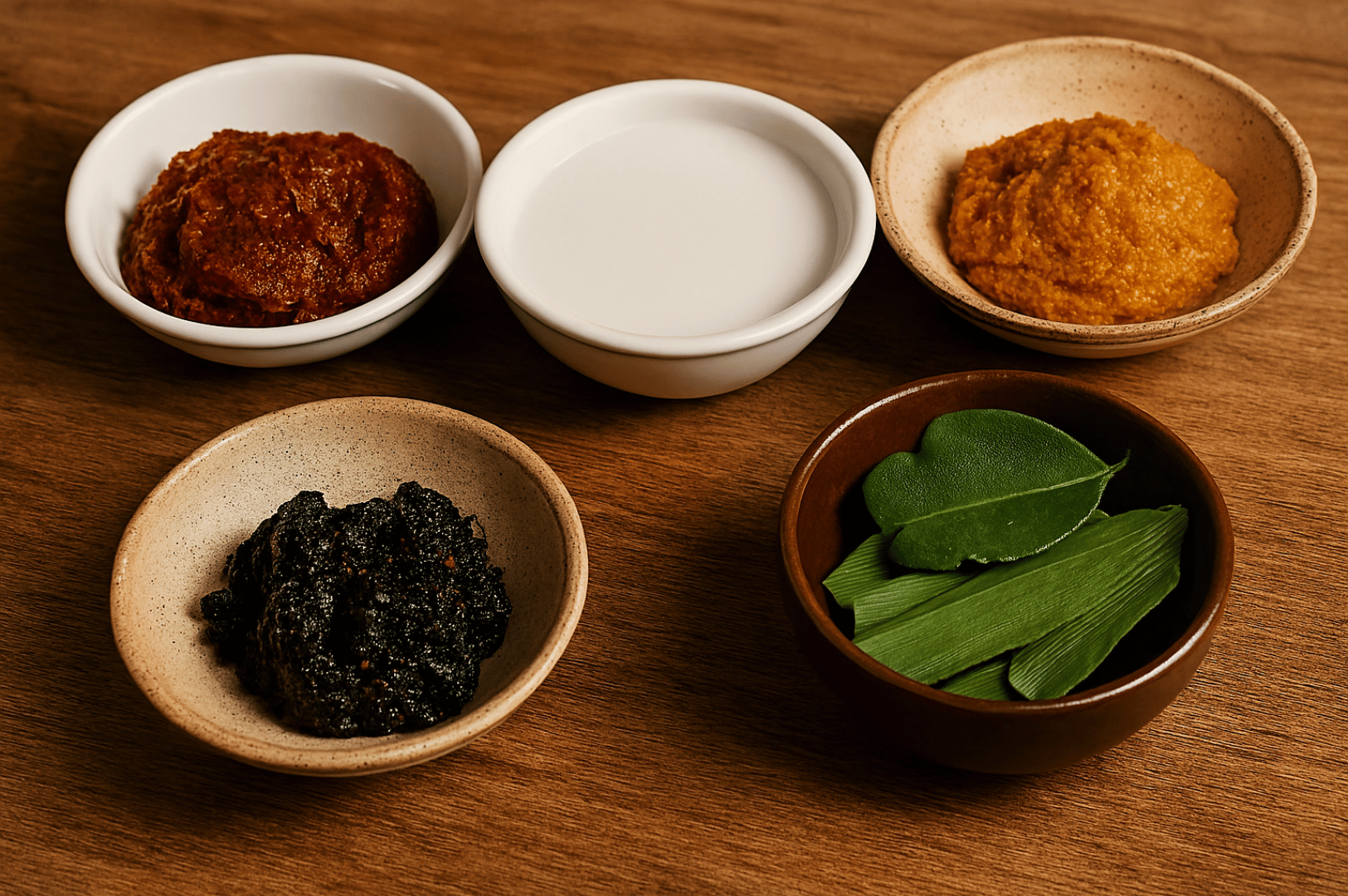
The magic of Peranakan cuisine lies in its fresh ingredients, complex spices, and careful techniques:
- Sambal Belachan: Fermented chili paste for spice and umami.
- Coconut Milk & Coconut Cream: Create richness in soups, curries, and stews.
- Rempah: Hand-pounded spice pastes with turmeric, galangal, lemongrass, and chilies.
- Wok Hei: Smoky aroma from high-heat stir-frying.
- Kaffir Lime Leaves & Pandan Leaves: Signature Peranakan herbs for fragrance.
To truly appreciate Peranakan food, one must learn to cook using these traditional ingredients and methods—many chefs spend years perfecting their craft.
Peranakan Food in Joo Chiat: A Neighborhood’s Culinary Legacy
Nestled in the heart of Singapore’s east, Joo Chiat stands as a living tribute to the enduring spirit of Peranakan culture. This vibrant neighborhood is renowned for its colorful shophouses and, more importantly, its thriving Peranakan food scene. Here, the aroma of coconut milk, galangal, and kaffir lime leaves drifts from kitchens where time-honored recipes are lovingly prepared.
Joo Chiat’s Peranakan restaurants are celebrated for their dedication to authentic Peranakan cuisine. Whether you’re savoring a hearty bowl of nonya chap chye, indulging in the earthy richness of ayam buah keluak, or enjoying the tender, spice-laden beef rendang, each dish tells a story of cultural fusion. The cooking here is a harmonious blend of Chinese and Malay influences, with every bite revealing layers of tradition and innovation.
From family-run eateries to well-known establishments, Joo Chiat offers a diverse array of Peranakan food experiences. The use of fresh coconut, aromatic herbs, and signature ingredients like buah keluak ensures that every meal is both comforting and unforgettable. For anyone seeking the true taste of Singapore’s Peranakan heritage, a culinary journey through Joo Chiat is simply essential.
Halal Peranakan Options: Tradition Meets Inclusivity
Singapore’s food scene is ever-evolving, and the rise of halal Peranakan cuisine is a testament to the city’s spirit of inclusivity. Today, more Peranakan restaurants are embracing halal-certified ingredients and cooking methods, making it possible for everyone to enjoy the bold, spicy flavors of traditional Peranakan food.
Halal Peranakan establishments like Old Bibik’s Peranakan Kitchen and Nyonyas & Gentlemen are redefining what it means to serve authentic Peranakan cuisine. Their menus feature crowd-pleasers such as spicy assam prawns, aromatic chap chye, and the luxurious wagyu beef rendang—all prepared in accordance with halal standards. These dishes retain the signature depth and complexity of Peranakan cooking, with rich coconut milk, vibrant spices, and a perfect balance of sweet, sour, and savory notes.
By honoring tradition while embracing diversity, halal Peranakan restaurants are opening up this beloved cuisine to a wider audience. Whether you’re craving a classic beef rendang or eager to try innovative new dishes, Singapore’s halal Peranakan food scene promises a delicious and inclusive dining experience for all.
Culinary Hotspots: The Best Peranakan Restaurants in Singapore
Singapore’s Peranakan restaurants range from hawker staples to Michelin-starred fine dining:
- Simply Peranakan Cuisine (Orchard): Known for wagyu beef rendang, ayam buah keluak, and nonya chap chye.
- Bonding Kitchen (Parkway Parade): Chef Danny brings authentic Peranakan food to life with mee siam, assam prawns, and beef rendang.
- Candlenut: Michelin starred Peranakan restaurant, famous for innovative Nyonya dishes.
- Peranakan Inn: One of the restaurants of the House of Peranakan. It offers cooking classes, teaching traditional recipes and elaborate meals with coconut cream, mixed vegetables, and chicken curry.
- Hawker Stalls: For assam pedas, laksa, and nonya kueh—every bite a taste of Peranakan heritage.
These establishments are renowned for serving some of the best Peranakan food in Singapore, attracting both locals and visitors seeking exceptional and authentic cuisine.
Modern Twists: Chefs Redefining Peranakan Cuisine
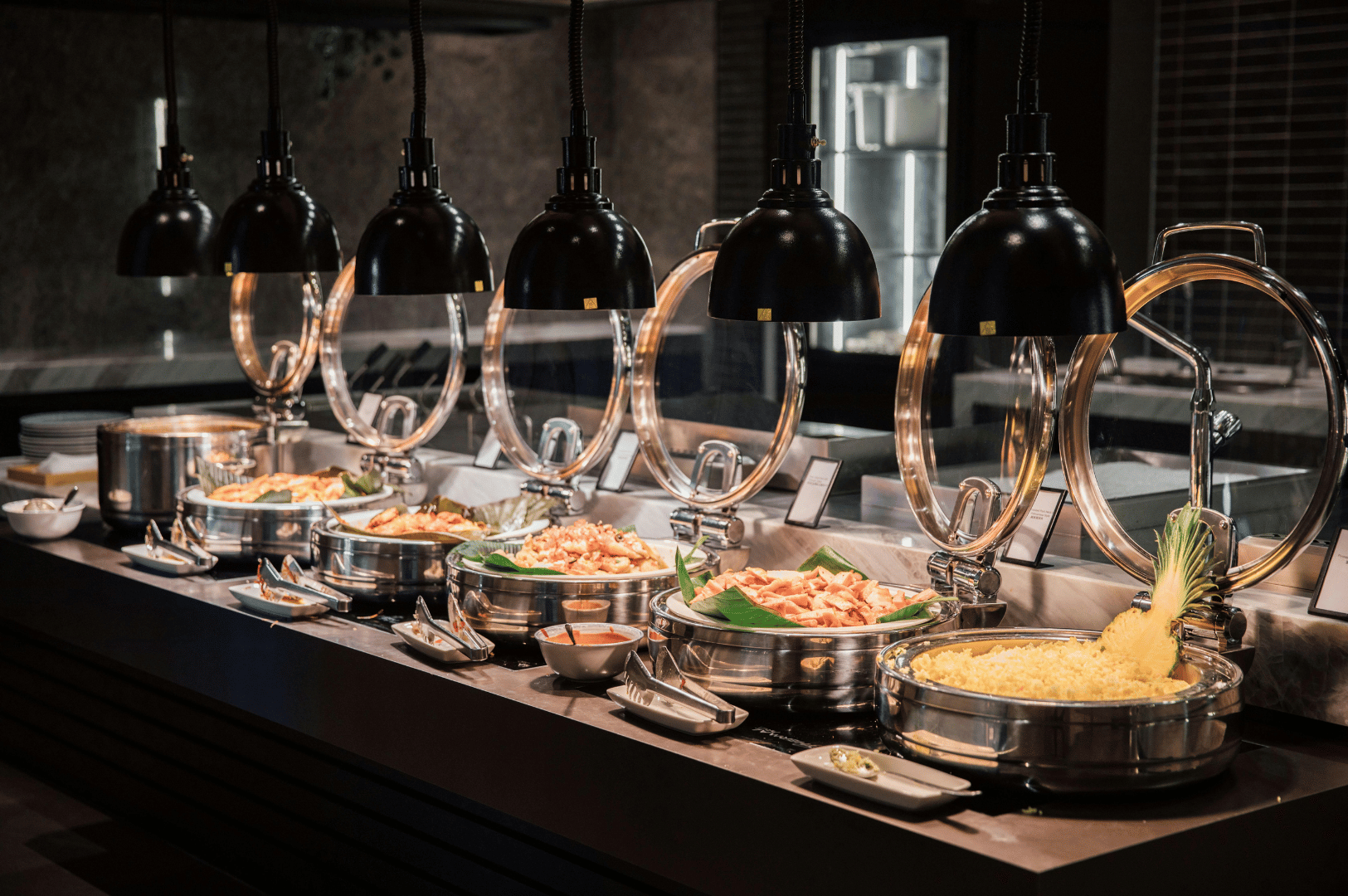
Today’s modern Peranakan restaurants blend tradition with innovation:
- Candlenut (Chef Malcolm Lee): Luxury takes on wagyu beef rendang and buah keluak ice cream.
- Labyrinth (Chef LG Han): Creative nyonya dishes, including lobster laksa with micro-herbs.
- Po Restaurant & Violet Oon Singapore: Elegant presentations of authentic Peranakan food.
Experience Peranakan Cuisine at Home: Chicken Kapitan Recipe
Ingredients:
- 1 kg chicken pieces
- 10 dried chilies, soaked and deseeded
- 5 shallots, 3 cloves garlic, 1-inch galangal
- 2 stalks lemongrass (white part only)
- 1 tsp turmeric powder, 1 tsp toasted belachan
- 4 tbsp oil, 1 cup coconut milk, 1/4 cup water
- 2 tbsp tamarind paste mixed in 1/4 cup water
- 1 tbsp sugar, salt, kaffir lime leaves
Method:
- Blitz chilies, shallots, garlic, galangal, lemongrass, turmeric, and belachan into a paste.
- Heat oil; fry paste until aromatic, 5 min.
- Add chicken pieces, toss to coat.
- Add coconut milk, water, and tamarind juice; season with sugar and salt.
- Simmer 25–30 min until chicken is tender.
- Garnish with shredded kaffir lime leaves and serve with rice.
Singapore’s Culinary Harmony: More Than Just Food
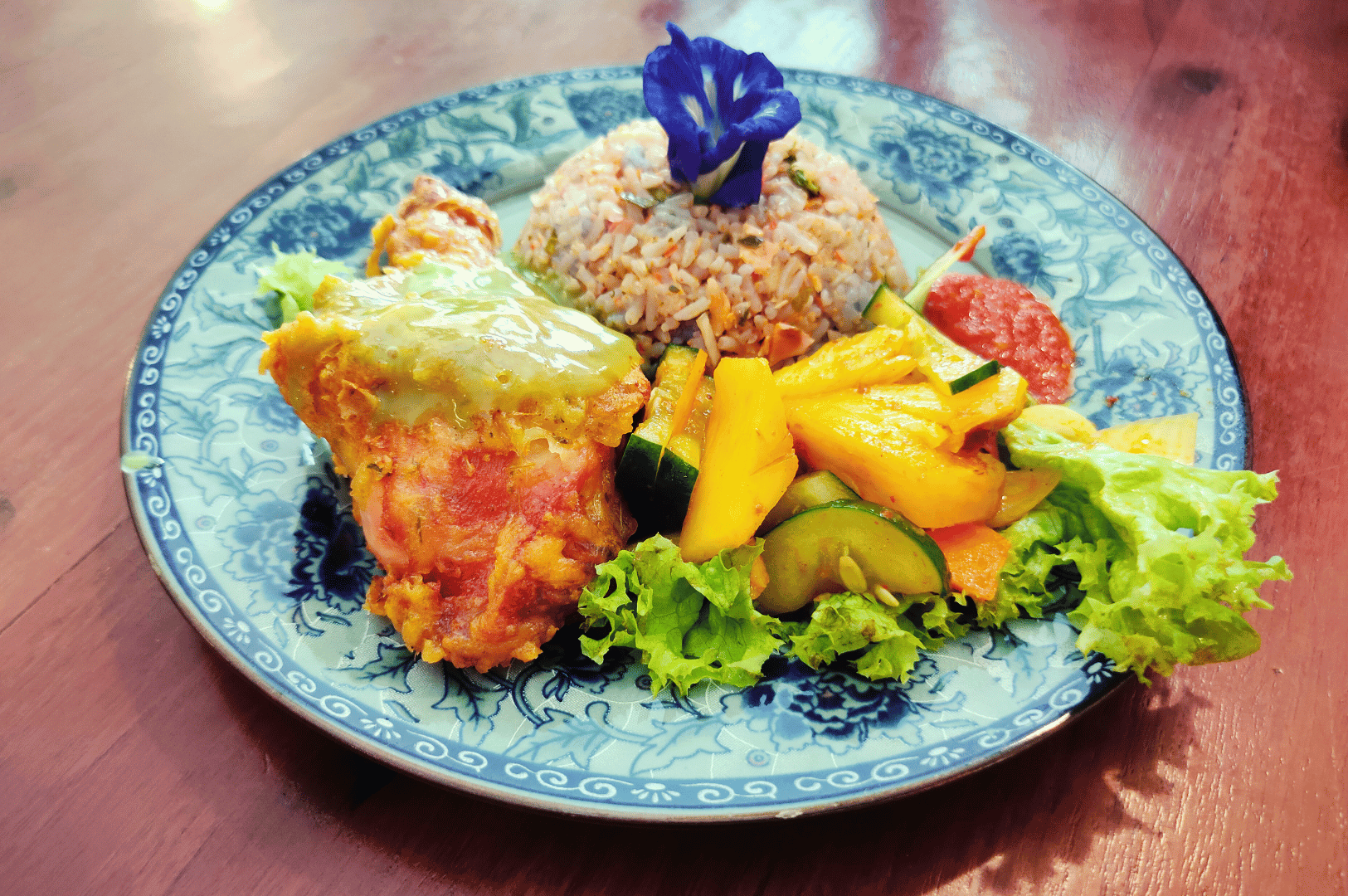
Peranakan cuisine is a celebration of cultural fusion, from everyday dinner to elaborate meals. From hawker stalls to Michelin starred Peranakan restaurants, every bite of Nyonya food tells the story of Singapore’s Peranakan heritage, where Chinese ingredients, Malay spices, and coconut milk come together in perfect harmony.
Whether you’re savoring ayam buah keluak, rolling your own popiah, or enjoying mee siam, each dish is a taste of history, tradition, and innovation—a flavorful reminder that in Singapore, fusion is not just celebrated, it’s a way of life.
For more local flavors, explore the essence of satay in Singapore’s hawker culture, or take a visual journey along the spice route of Little India through food photography.
Steam & Seduction: Singapore for Foodies
December 15, 2025
The air in Singapore is never just air. It is a potent cocktail of sensation, a humid embrace laced with the fragrant perfume of pandan, the sharp zest of calamansi, and the deep, soulful aroma…
Spice Affair: Singapore Foodies’ Guide to Little India
December 12, 2025
The moment you step onto Serangoon Road, the world changes. The air grows thick with the heady perfume of jasmine garlands, sweet incense, and a complex blend of toasted spices that seems to emanate from…
The Morning Ritual: Street Food Hawkers Before Dawn
December 8, 2025
The world is dark, cloaked in a tranquil stillness that precedes the sunrise. A deep blue hue hangs over Singapore, and the only sounds are the distant hum of a lone vehicle or the gentle…
Midnight Confessions: The Secret Language of Supper in Food Images
December 5, 2025
The city exhales. Its daytime hustle recedes into a quiet hum, replaced by a different kind of pulse. On street corners bathed in the lonely glow of a single lamp post, a new world awakens….
Bespoke Tasting Tour: Michelin Street Food in Singapore
December 1, 2025
Imagine a culinary journey tailored just for you, a path that winds through the heart of a city’s most celebrated flavors, with every stop a new delight for both your palate and your camera lens….
Night Market Seduction: Low-Light Techniques for Food Photographer
November 28, 2025
The sun dips below the horizon, and a different kind of energy begins to hum. Lanterns flicker to life, steam billows into the cool night air, and the chaotic, beautiful symphony of a night market…
Best Street Food in Singapore: Roti Prata’s Sensual Stretch
November 24, 2025
The air in the coffee shop is thick with the scent of brewed coffee and the low hum of morning conversation. But all eyes are drawn to one spot, a brightly lit stage of stainless…
Katong: The Peranakan Pleasure Principle of Street Foods
November 21, 2025
Stroll through the streets of Katong, and you’ll feel a palpable shift in the air. The sleek modernity of Singapore’s city center gives way to a charming streetscape of colorful, ornate shophouses and a slower,…
The Laksa Queen’s Secret to Good Street Food in Singapore
November 17, 2025
In the maze-like corridors of Singapore’s hawker centres, where hundreds of vendors vie for attention, true legends are not made overnight. They are forged in decades of heat, steam, and unwavering dedication. One such legend…
Morning Rituals: Singapore Street and Food Awakens
November 14, 2025
The world is still cloaked in a deep, inky blue, but Singapore is far from asleep. A quiet energy hums beneath the surface, a city stirring not with the roar of traffic, but with the…

